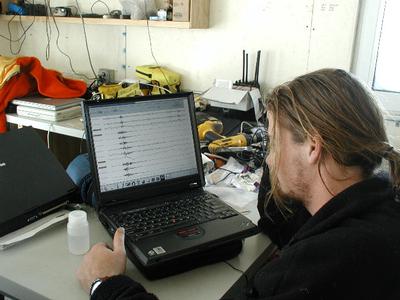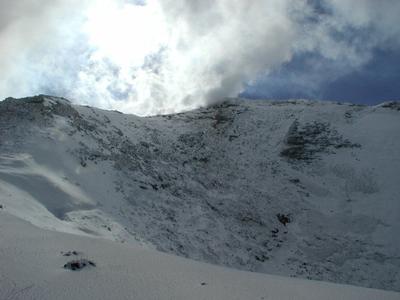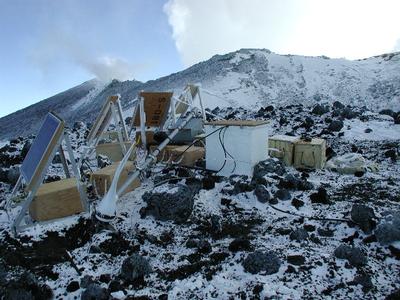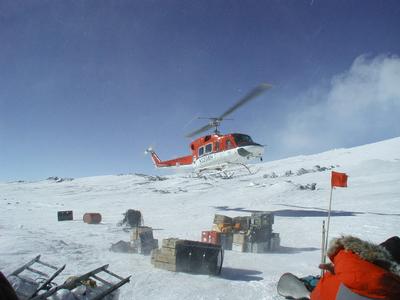18 December, 2001
The events of 12/17 and 12/18 have merged into one day with no sleep in
between. That is an easy thing to do with constant sunshine. The
scheduled trip back to McMurdo for Monday was cancelled due to weather.
"Cancelled due to weather" has become something of a lesson in patience in
Antarctica. We learn to never put complete stock in travel plans even one
day in advance. Although the cloud cover was too dense for helicopter
travel, we were able to accomplish several important tasks, and I captured
one more opportunity to travel up the mountain to a site I had not been to
before. By Tuesday (today) the weather had become as close to perfect as
I can imagine. No wind. No cloud cover. Zero degrees (C).
I am writing from McMurdo, and as such the capacity for sending pictures
is much better. Here, in no parcticular order, is a record of my last
hours on Erebus.

This is the transmitter that sends the television signal from the = volcano summit to McMurdo Station. Note the open water in the = background. This is also the result of our tremendous storm. I would = like to re-emphasize the fact that every bit of data received and sent = from stations such as this represent countless hours of difficult = struggle in tough conditions. Very much of the "science" that I = experienced on this expedition was represented by plain hard work. This = is not an easy place to get to!

Before ascending the volcano one more time, Jeff Johnson reviews acoustic data. He was preparing to install electronics for two microphones at a station named "E1." We accomplished that task in the morning.

To the southwest of the active crater is an old crater that no longer erupts. It is much smaller than the active one and very interesting to see. I had a strong urge to go down into the crater, but time and boot gear did not permit. The site E1 is on the rim of this crater.

Even in a dormant vent, the heat generated by magma within the volcano is evident. Note the fumerole vent on this beautiful sculpture of rock and ice within the old crater.

At the E1 site there is (was) a power station that included solar and wind generation. The wind tower is down due to the recent storm. We had winds up to 92 miles per hour at the hut, which is somewhat sheltered. I can only imagine what the winds must have been here at the summit....

This is the transmitter that sends the television signal from the volcano summit to McMurdo Station. Note the open water in the background. This is also the result of our tremendous storm. I would like to re-emphasize the fact that every bit of data received and sent from stations such as this represent countless hours of difficult struggle in tough conditions. Very much of the "science" that I experienced on this expedition was represented by plain hard work. This is not an easy place to get to!

My ride arrives. The material that is visible on the ground is a fraction of the equipment and material that has to be moved off the mountain at the end of the field season. Much of the past 48 hours has been spent organizing it all.
Contact the TEA in the field at
.
If you cannot connect through your browser, copy the
TEA's e-mail address in the "To:" line of
your favorite e-mail package.
|
